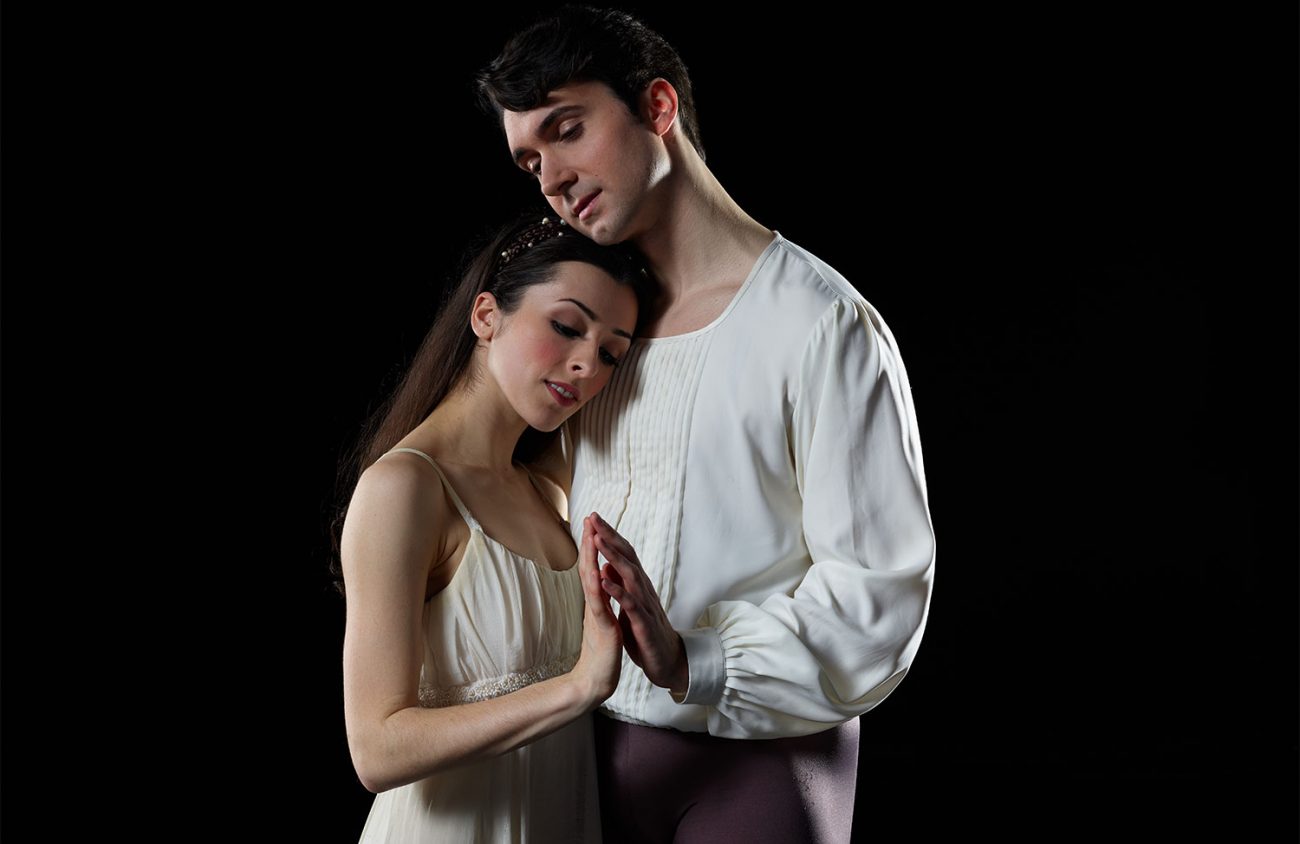As a little kid in the ’70s, I wore a groove in my parent’s vinyl record of Leonard Bernstein conducting and narrating the New York Philharmonic in Sergei Prokofiev’s Peter and the Wolf.
“That’s a duck made of music!” I remember thinking. “That cat’s a clarinet!”
Mind blown.
While Prokofiev’s classic 1936 symphonic tale for children is arguably his most famous work — the Wolf’s terrifying French horn andante molto did little to advance that creature’s reputation as anything but the O.G. killer — it’s the composer’s relationship to dance, to ballet, that etches a musical transition from earlier expressionism to a new modern form that artists are still inspired by nearly a century later.
So it’s fitting that Eugene Ballet paired last week with Orchestra Next to present a fresh take on the greatest love story in history, Romeo & Juliet, which ran Feb. 9-10 at the Hult Center.
Choreographed by Toni Pimble and conducted by Brian McWhorter, this compelling production features thoughtfully rendered sets designed by Jerry Williams, whose modular, architectural pieces, with their sculptural details, enchant throughout.
Lighting by Kelly Baum, and costumes by Toni Pimble, Jonna Hayden and Lynn Bowers, glow with hot and cool tones, of families long-divided, transporting us from a sunlit market square to a masked ball, a bedroom and a tomb.
Let’s not forget, these two kids die. Happy Valentine’s Day!
Hirofumi Kitazume as Romeo is the perfect blend of romance and élan. And as Juliet, Yuki Beppu’s irrepressibly gamine spirit burns with a filament of hope.
Christopher Villa’s fight choreography, supported by techniques imparted by fencing master William Hulings, lends a whole lotta masculine energy and bravado to the fair streets of Verona. Pimble exploits the story’s thematic violence effectively, showing us the regimented “Dance of the Knights,” and taking us on a steep departure to a frenzied, collective breakdown after Tybalt’s death, and later, peering in on the physicalized frustration of Lord Capulet toward his daughter.
One place that Pimble might have moved further is in defining Mercutio (Koki Yamaguchi) and Tybalt (Colton West). In the story, it’s Mercutio’s slow death — his making jokes with his friends, the “look for me tomorrow” speech — that reframes Shakespeare’s narrative.
But in this ballet, a mortally wounded Mercutio jumps a few times and takes a backward swan dive off a pedestal into his friends’ waiting arms. It felt like a missed opportunity to show us why our buttercup Romeo would take up vengeance.
Tybalt is strong and sexy, a balance to Mercutio’s light energy. But I wanted more from this character, too, in choreographic development.
If Mercutio’s death motivates Romeo, it’s Tybalt’s death that divides the town. Pimble does an incredible job showing that devastation, emotional carnage and confusion. The crowd scene following Tybalt’s demise is a tour de force, like a Hieronymus Bosch painting, all limbs and panic.
Though the score is carved into three acts, one wonders if two intermissions are necessary? I might take Bernstein’s approach, and put in one break, right after the rumble.
Eugene Ballet’s next production will be Interplay, a collaboration with the University of Oregon School of Music and Dance, March 8-10 at the Hult Center.
